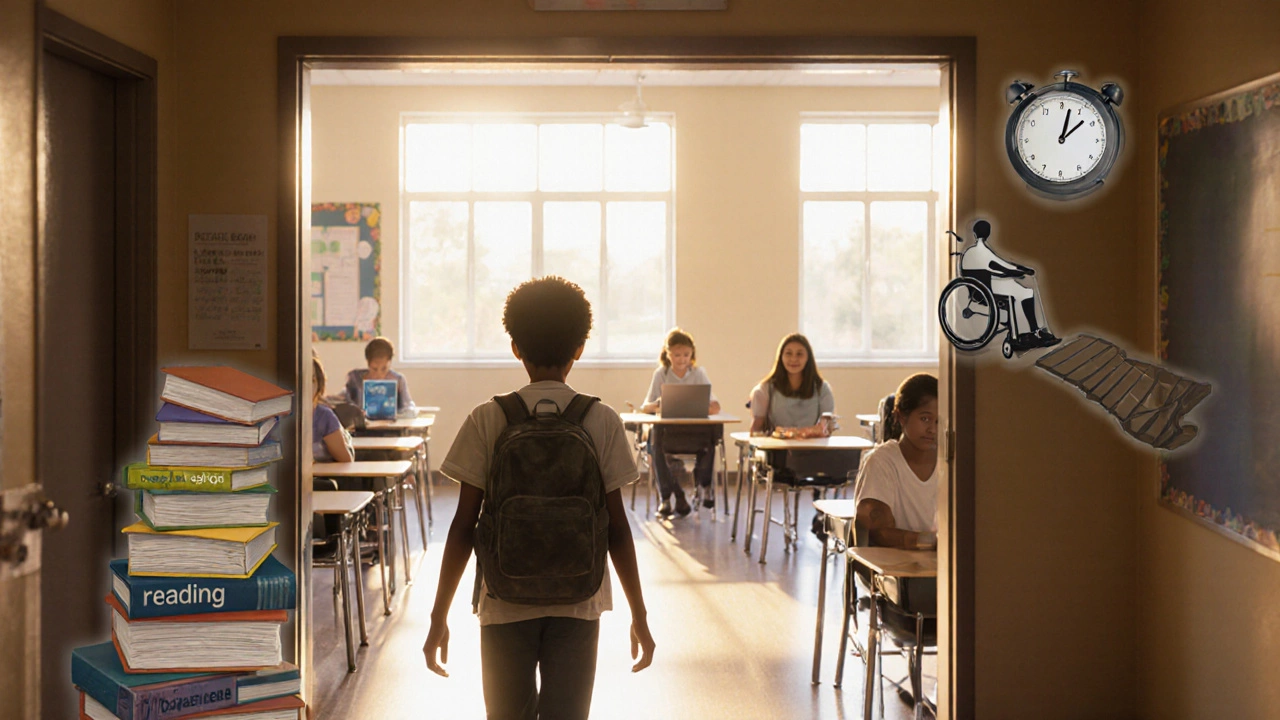Learn why student accommodations are essential, covering legal rights, types of support, benefits, and best practices for schools and learners.
Reasonable Accommodation: What It Means and Why It Matters
When working with reasonable accommodation, a legally required adjustment that removes barriers for people with disabilities. Also known as reasonable adjustment, it applies in schools, workplaces, and public services to ensure equal access. reasonable accommodation is not a nice‑to‑have perk; it’s a legal duty that levels the playing field.
One of the most common forms shows up in education. ADHD accommodations, customized supports that help students focus, organize and demonstrate knowledge illustrate how schools translate the abstract duty into concrete actions. These can be extra time on tests, a quiet room, or assistive technology. The 504 Plan, a civil‑rights document that outlines specific accommodations for K‑12 students is the most widely used framework in the US. It requires schools to identify barriers, match accommodations to the barrier, and monitor outcomes. When a student’s needs shift, the plan adjusts—showing how reasonable accommodation is an ongoing, flexible process.
Beyond the 504 Plan, many students rely on an IEP, an individualized education program that provides specialized instruction and related services. While the 504 Plan focuses on access, the IEP dives deeper into instructional changes, therapy, and progress tracking. Both documents demonstrate that reasonable accommodation requires collaboration: educators, parents, and the student all have a role. This collaboration is a key attribute of effective accommodation—it isn’t a one‑size‑fits‑all checklist but a tailored solution that evolves with the learner.
Employers face the same duty under disability legislation. Workplace accommodations can range from ergonomic chairs to flexible schedules, and they often mirror the educational strategies used for ADHD. The law treats neurodiversity—differences in brain wiring such as ADHD, autism, dyslexia—as a legitimate basis for accommodation. Recognizing neurodiversity as a spectrum of strengths and challenges expands the pool of possible adjustments and shifts the conversation from “fixing” a problem to “optimizing” performance.
From a policy angle, reasonable accommodation requires three steps: identify the barrier, propose a suitable adjustment, and implement it without causing undue hardship. This triple‑step model connects the central concept to its legal and practical dimensions. For example, a university might identify that a student cannot sit for long periods, propose a standing desk, and implement it while ensuring that other students aren’t disadvantaged. The model shows how the concept encompasses both the identification of need and the delivery of a concrete solution.
Technology has become a game‑changer. Digital platforms now offer captioning, screen readers, and customizable interfaces—all falling under the umbrella of reasonable accommodation. When a school adopts a learning management system that lets students change font size or color contrast, it meets legal standards while also boosting overall usability. This demonstrates the predicate that “reasonable accommodation enables technology to support inclusion,” linking the central entity to modern tools.
In practice, the success of any accommodation hinges on communication. Clear documentation, regular check‑ins, and willingness to adjust are essential. If a student with ADHD reports that extra time isn’t helping, the school must revisit the plan and perhaps add organizational coaching. This iterative loop mirrors the legal requirement that accommodations be reasonable and effective, reinforcing the semantic connection between “reasonable accommodation” and “continuous improvement.”
Below you’ll find a curated set of articles that break down these ideas further. From deep dives into ADHD accommodations and legal frameworks to tips on leveraging technology, the collection equips you with actionable insights no matter whether you’re a student, parent, educator, or employer.
